Abstract
The Hartnup mutation affects an amino acid transport system of intestine and kidney used by a large group of neutral charge alpha-amino acids (six essential and several nonessential). We compared developmental outcomes and medical histories of 21 Hartnup subjects, identified through newborn screening, with those of 19 control sibs. We found no significant differences in means of growth percentiles and IQ scores between Hartnup and control groups (but all low academic performance scores were found in the Hartnup group, and various skin lesions occurred in five Hartnup subjects), no significant difference between means of the summed plasma values for amino acids affected by the Hartnup gene in Hartnup and control groups, two Hartnup subjects with clinical manifestations--impaired somatic growth and IQ in one, impaired growth and a "pellagrin" episode in the other--who had the lowest summed plasma amino acid values in the Hartnup group; the corresponding values for their sibs were the low outliers in the control group, and two tissue-specific forms of the Hartnup (transport) phenotype: renal and intestinal involvement (15 families) and renal involvement alone (one family), both forms having been inherited as autosomal recessives (the symptomatic probands had the usual form). Whereas deficient activity of the "Hartnup" transport system is monogenic, the associated plasma amino acid value (measured genotype) is polygenic. The latter describes the parameter of homeostasis and liability to disease. Cause of Hartnup disease is multifactorial.
Full text
PDF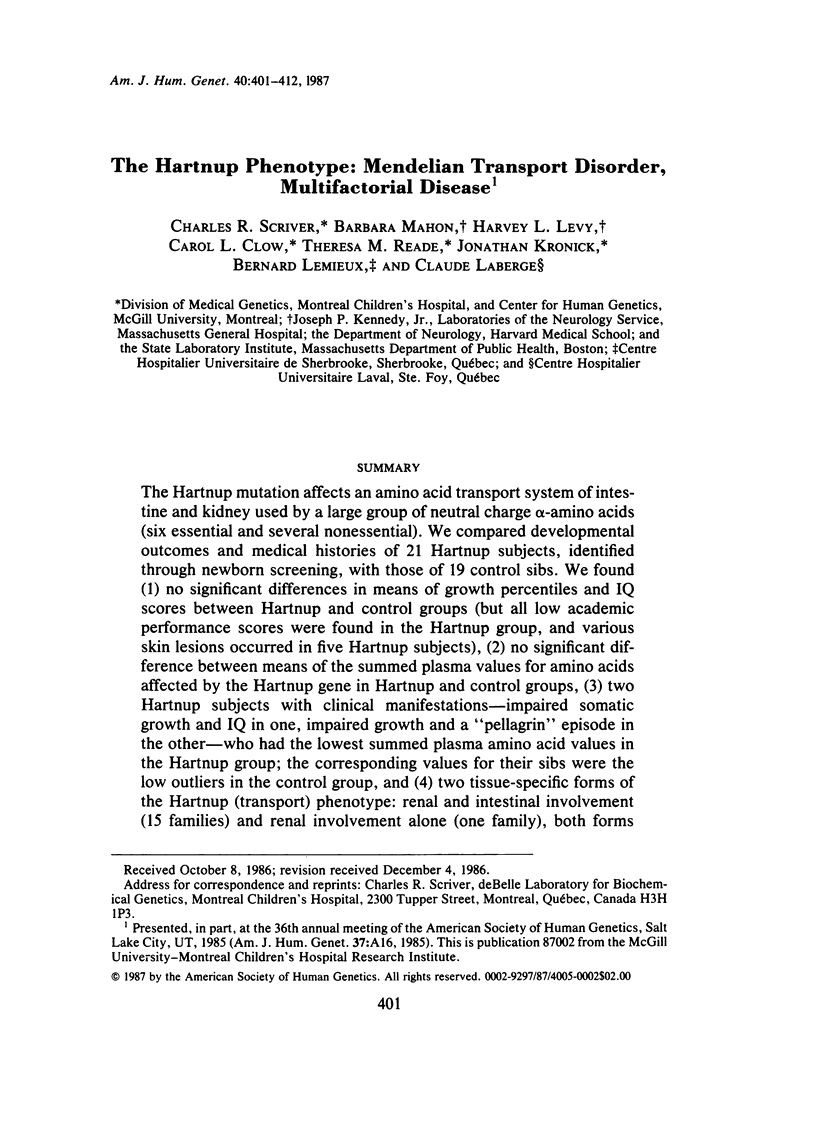
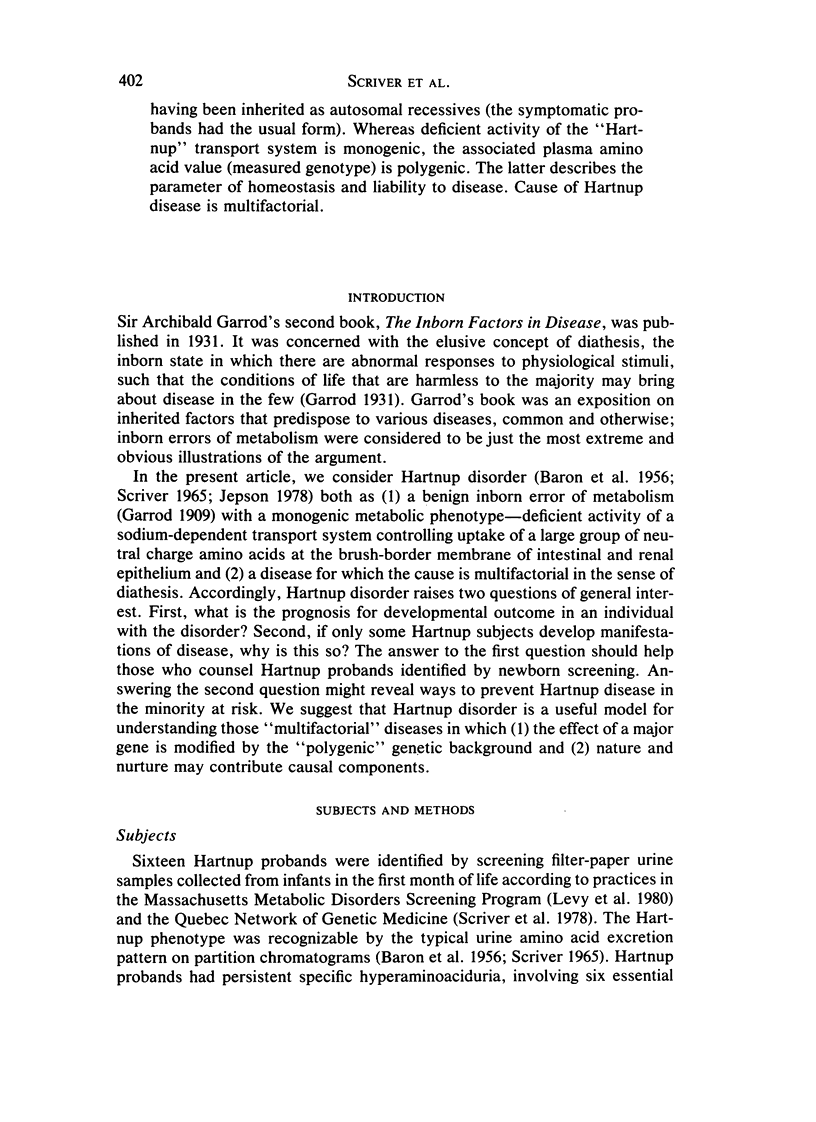
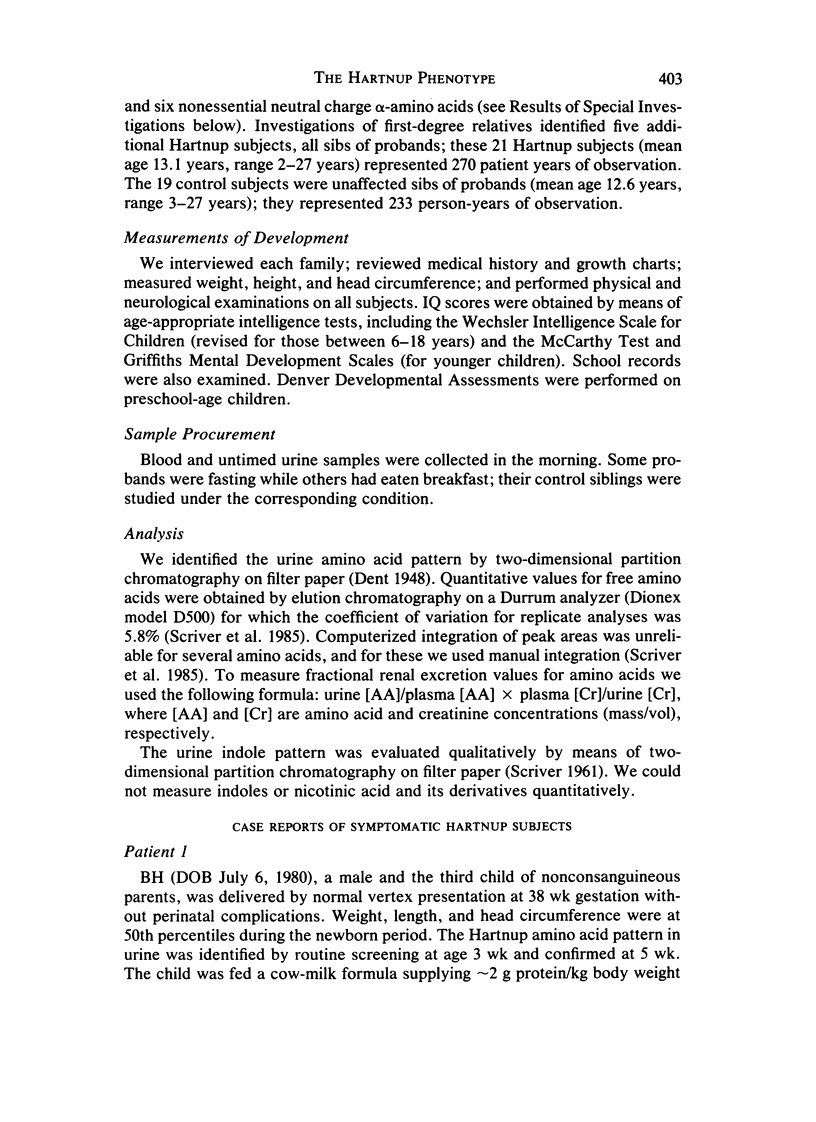
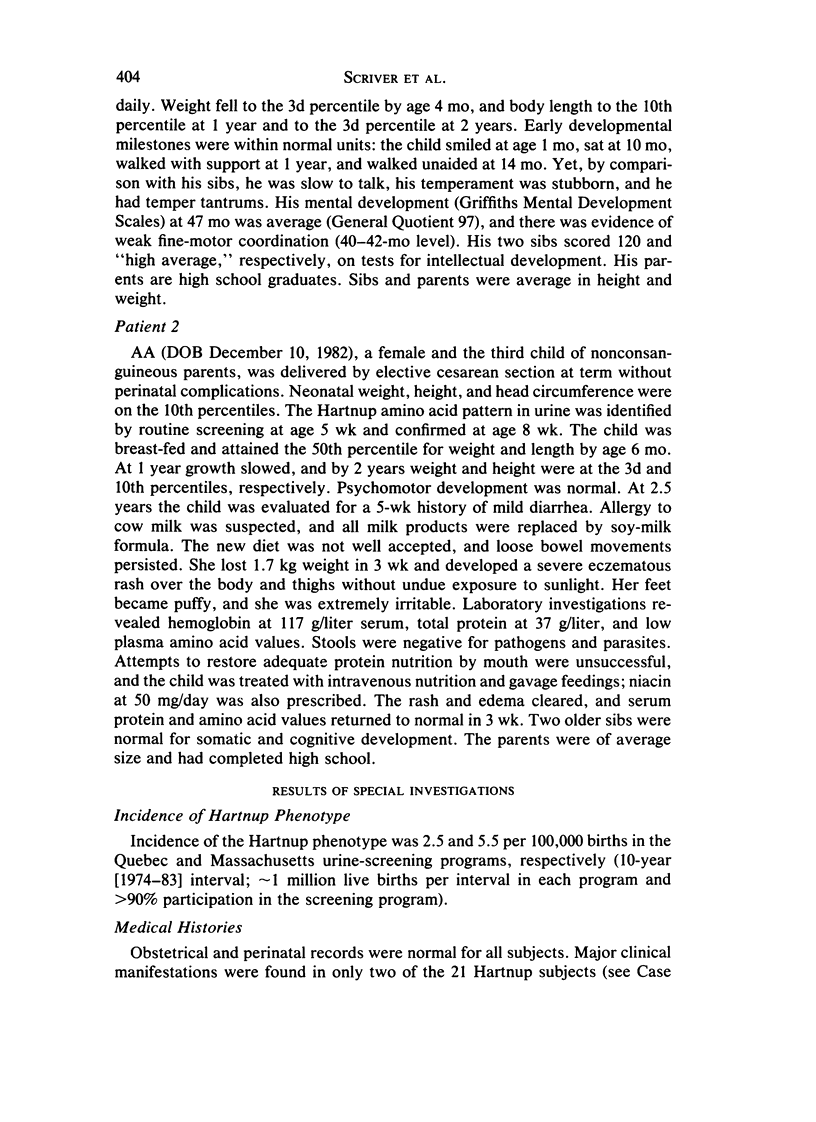


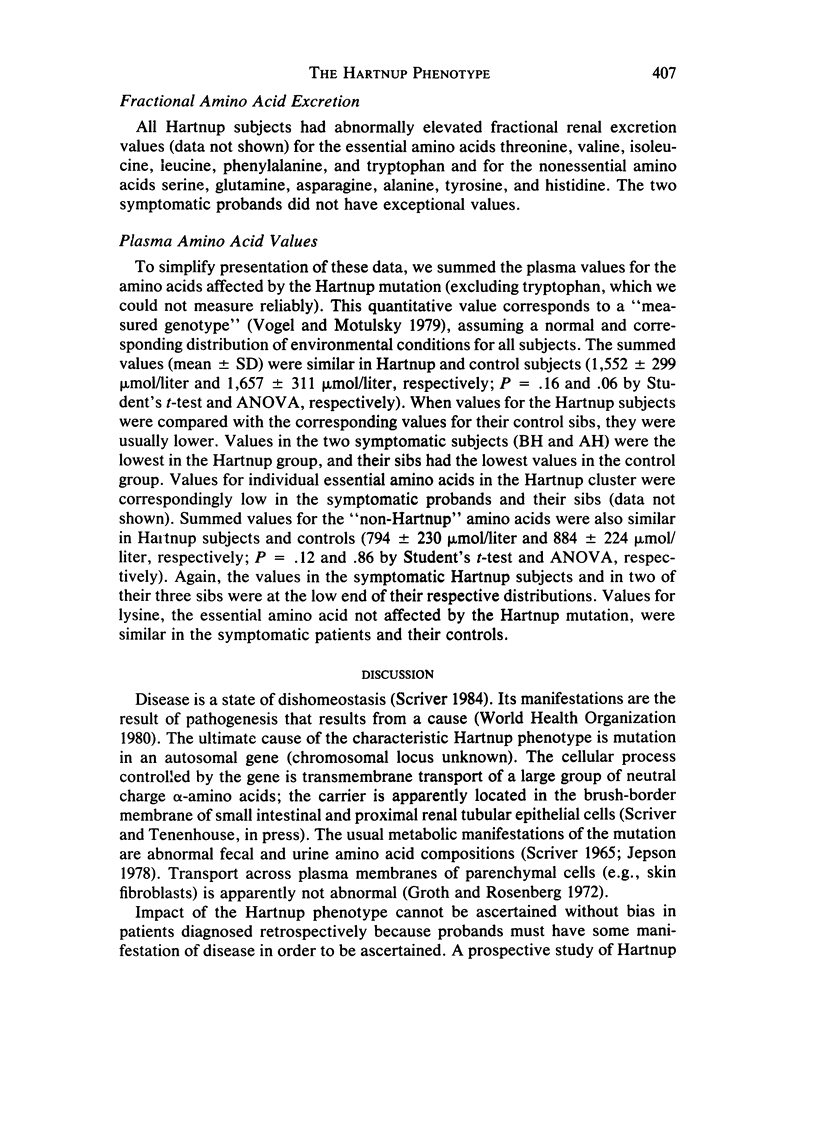

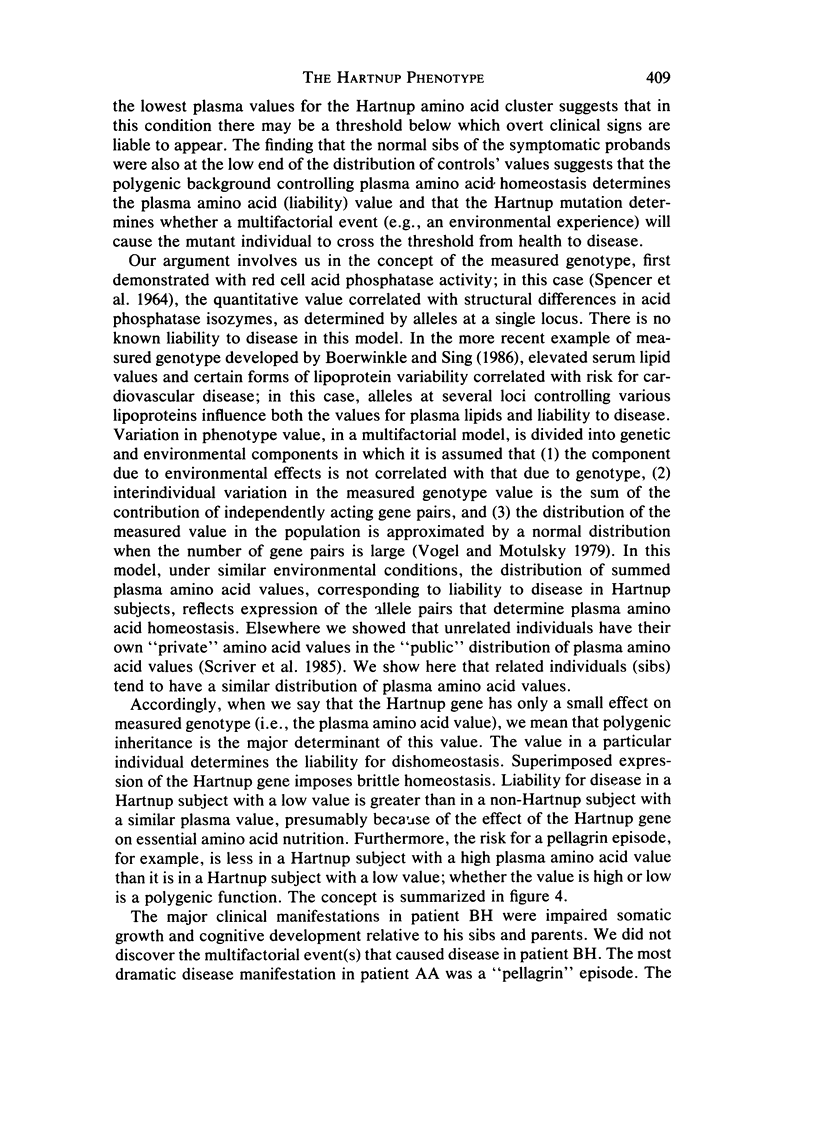
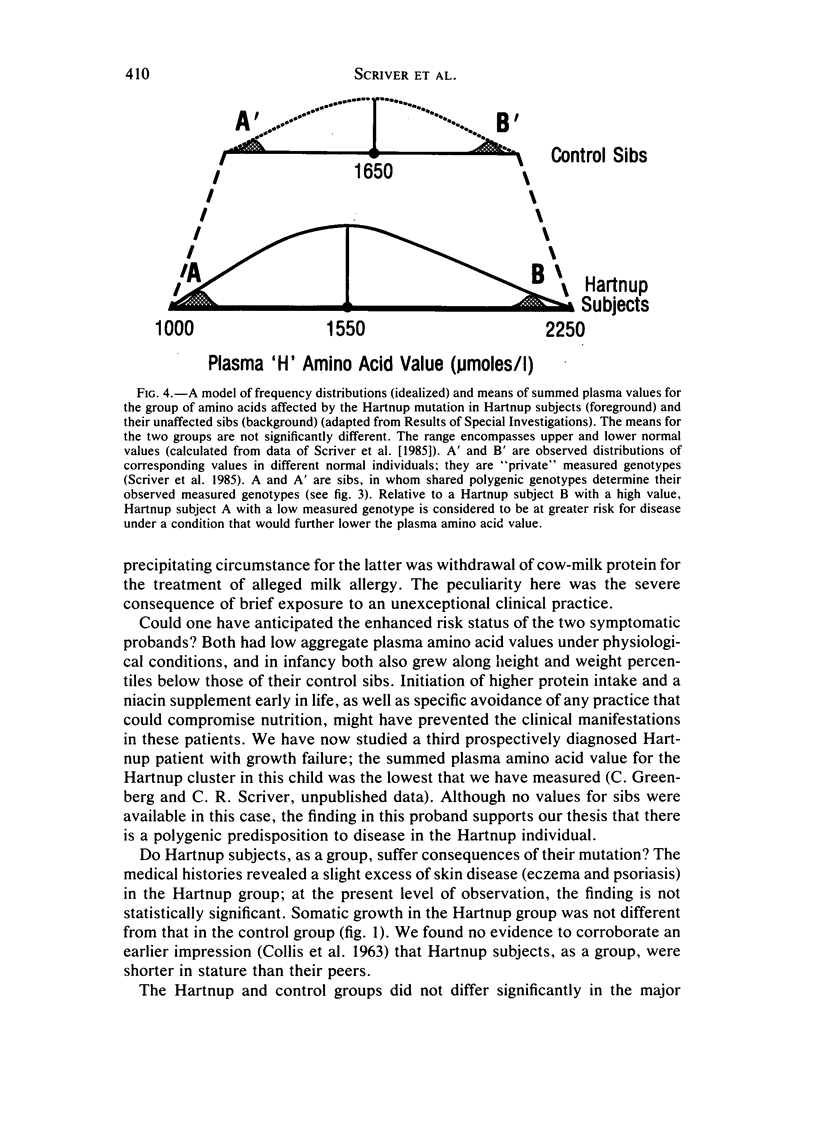
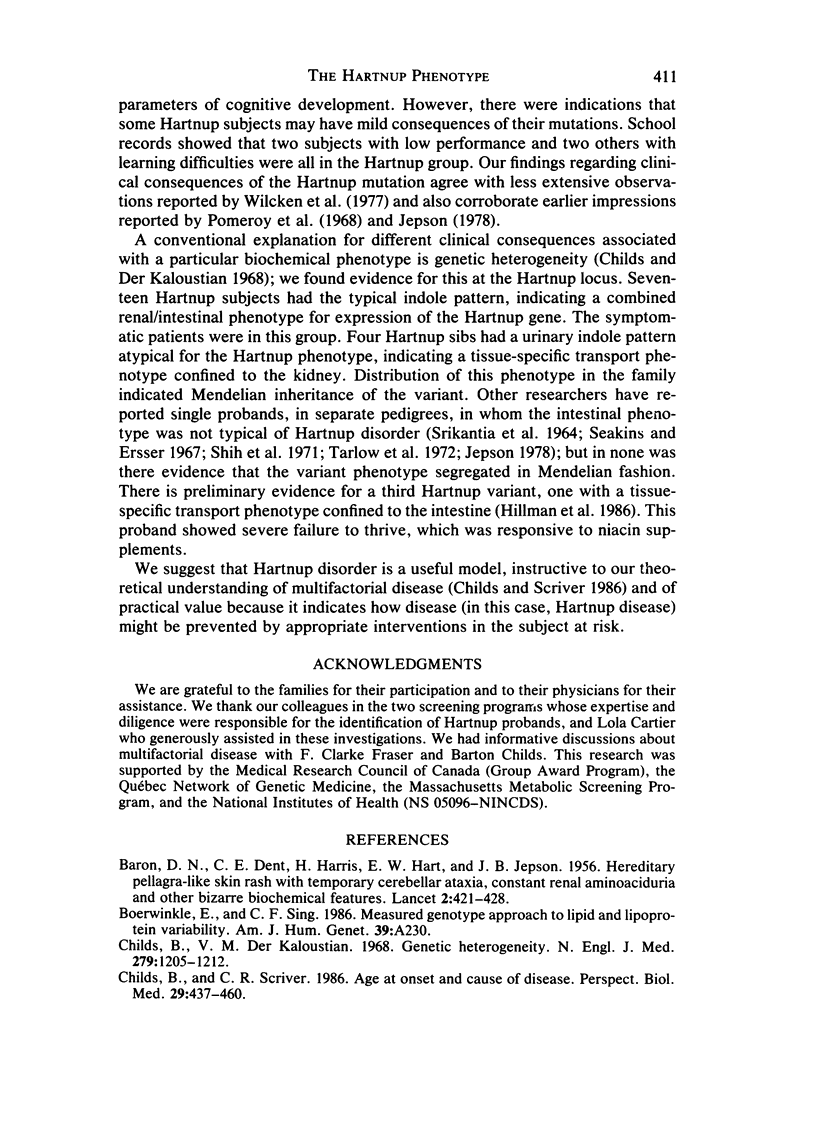
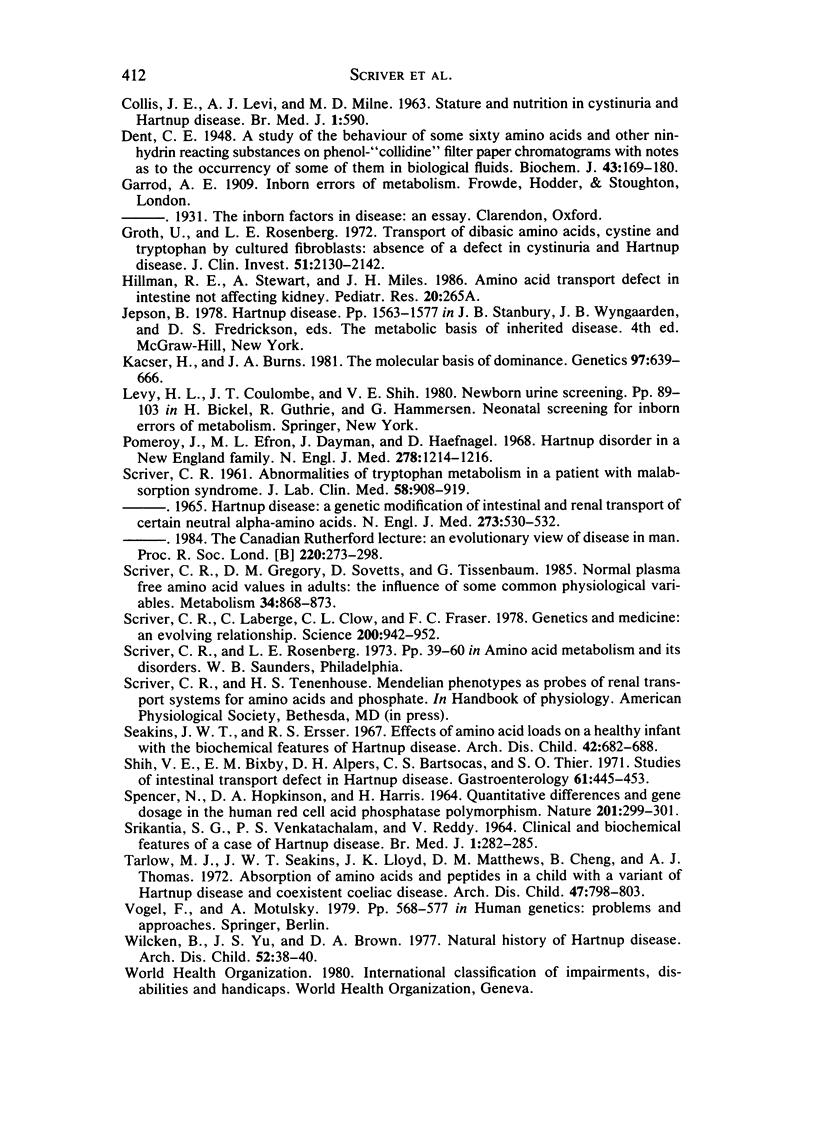
Selected References
These references are in PubMed. This may not be the complete list of references from this article.
- BARON D. N., DENT C. E., HARRIS H., HART E. W., JEPSON J. B. Hereditary pellagra-like skin rash with temporary cerebellar ataxia, constant renal amino-aciduria, and other bizarre biochemical features. Lancet. 1956 Sep 1;271(6940):421–428. doi: 10.1016/s0140-6736(56)91914-6. [DOI] [PubMed] [Google Scholar]
- COLLISS J. E., LEVI A. J., MILNE M. D. Stature and nutrition in cystinuria and Hartnup disease. Br Med J. 1963 Mar 2;1(5330):590–592. doi: 10.1136/bmj.1.5330.590. [DOI] [PMC free article] [PubMed] [Google Scholar]
- Childs B., Der Kaloustian V. M. Genetic heterogeneity. N Engl J Med. 1968 Nov 28;279(22):1205–contd. doi: 10.1056/NEJM196811282792206. [DOI] [PubMed] [Google Scholar]
- Childs B., Scriver C. R. Age at onset and causes of disease. Perspect Biol Med. 1986 Spring;29(3 Pt 1):437–460. doi: 10.1353/pbm.1986.0056. [DOI] [PubMed] [Google Scholar]
- Dent C. E. A study of the behaviour of some sixty amino-acids and other ninhydrin-reacting substances on phenol-;collidine' filter-paper chromatograms, with notes as to the occurrence of some of them in biological fluids. Biochem J. 1948;43(2):169–180. [PMC free article] [PubMed] [Google Scholar]
- Groth U., Rosenberg L. E. Transport of dibasic amino acids, cystine, and tryptophan by cultured human fibroblasts: absence of a defect in cystinuria and Hartnup disease. J Clin Invest. 1972 Aug;51(8):2130–2142. doi: 10.1172/JCI107020. [DOI] [PMC free article] [PubMed] [Google Scholar]
- Kacser H., Burns J. A. The molecular basis of dominance. Genetics. 1981 Mar-Apr;97(3-4):639–666. doi: 10.1093/genetics/97.3-4.639. [DOI] [PMC free article] [PubMed] [Google Scholar]
- Pomeroy J., Efron M. L., Dayman J., Hoefnagel D. Hartnup disorder in a New England family. N Engl J Med. 1968 May 30;278(22):1214–1216. doi: 10.1056/NEJM196805302782207. [DOI] [PubMed] [Google Scholar]
- SPENCER N., HOPKINSON D. A., HARRIS H. QUANTITATIVE DIFFERENCES AND GENE DOSAGE IN THE HUMAN RED CELL ACID PHOSPHATASE POLYMORPHISM. Nature. 1964 Jan 18;201:299–300. doi: 10.1038/201299a0. [DOI] [PubMed] [Google Scholar]
- SRIKANTIA S. G., VENKATACHALAM P. S., REDDY V. CLINICAL AND BIOCHEMICAL FEATURES OF A CASE OF HARTNUP DISEASE. Br Med J. 1964 Feb 1;1(5378):282–285. doi: 10.1136/bmj.1.5378.282. [DOI] [PMC free article] [PubMed] [Google Scholar]
- Scriver C. R., Gregory D. M., Sovetts D., Tissenbaum G. Normal plasma free amino acid values in adults: the influence of some common physiological variables. Metabolism. 1985 Sep;34(9):868–873. doi: 10.1016/0026-0495(85)90112-x. [DOI] [PubMed] [Google Scholar]
- Scriver C. R., Laberge C., Clow C. L., Fraser F. C. Genetics and Medicine: an evolving relationship. Science. 1978 May 26;200(4344):946–952. doi: 10.1126/science.644337. [DOI] [PubMed] [Google Scholar]
- Seakins J. W., Ersser R. S. Effects of amino acid loads on a health infant with the biochemical features of Hartnup disease. Arch Dis Child. 1967 Dec;42(226):682–688. doi: 10.1136/adc.42.226.682. [DOI] [PMC free article] [PubMed] [Google Scholar]
- Shih V. E., Bixby E. M., Alpers D. H., Bartoscas C. S., Thier S. O. Studies of intestinal transport defect in Hartnup disease. Gastroenterology. 1971 Oct;61(4):445–453. [PubMed] [Google Scholar]
- Tarlow M. J., Seakins J. W., Lloyd J. K., Matthews D. M., Cheng B., Thomas A. J. Absorption of amino acids and peptides in a child with a variant of Hartnup disease and coexistent coeliac disease. Arch Dis Child. 1972 Oct;47(255):798–803. doi: 10.1136/adc.47.255.798. [DOI] [PMC free article] [PubMed] [Google Scholar]
- Wilcken B., Yu J. S., Brown D. A. Natural history of Hartnup disease. Arch Dis Child. 1977 Jan;52(1):38–40. doi: 10.1136/adc.52.1.38. [DOI] [PMC free article] [PubMed] [Google Scholar]


